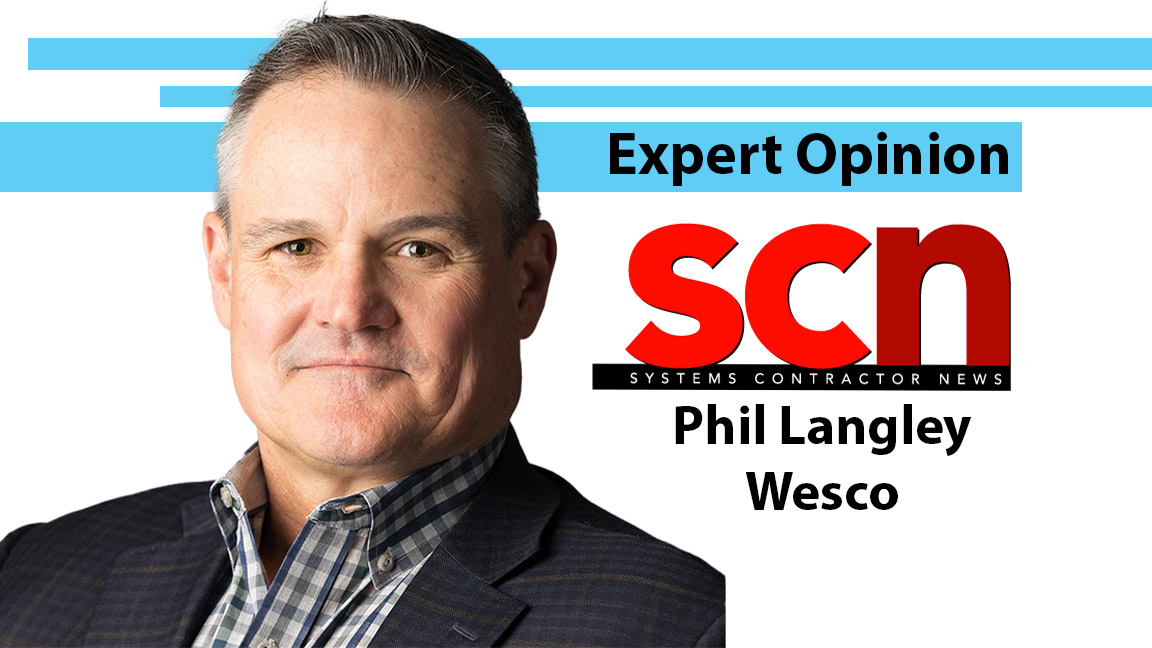
The global workforce has undergone a profound transformation in the 2020s, with remote work, hybrid models, and international collaboration becoming the new norm. Further enabled by accelerating technology innovations such as AVoIP, these changes have solidified Pro AV unified communications and collaboration (UCC) solutions as an organizational workflow backbone. The next step in this evolution is shifting organizational focus away from hardware and onto the outcome hardware delivers.
[SCN Hybrid World: How to Make Room Scheduling Easy]
Unlike in pre-pandemic times, as return to office (RTO) continues to evolve, global businesses are actively re-evaluating AV/UCC procurement strategies to meet these dynamic environmental demands. One emerging paradigm gaining traction is AV-as-a-Service (AVaaS).
As network convergence continues with AVaaS adoption accelerating, due to multiple factors—including the shift from low-volume, high-complexity to high-volume, low-complexity solutions—the AVaaS model is beginning to take off. Global end users realize AVaaS offers significant time and cost savings in purchasing, maintenance, and administration, setting the table for a service-forward UCC procurement approach.

As the technology infrastructure continues to be optimized, “as-a-service” may ultimately apply to global Pro AV solution portfolios beyond UCC, overlapping with physical security applications including surveillance, access control, occupancy and environmental controls/sensors, and more delivered within a network secure environment designed to satisfy the most stringent corporate IT security protocols. This “as-a-service” concept will revolutionize how businesses approach technology procurement and utilization. After revolutionizing software, the “as-a-service” model for UCC and other hardtech is just getting warmed up.
OpEx vs. CapEx
Organizations traditionally have invested in on-premises, bespoke UCC infrastructure, planning for and incurring significant capital expenditures (CapEx) to purchase and maintain hardware and software. But in a trend accelerated by the pandemic, UCC equipment has become much less complex, with higher-volume deployment needs, even as AVoIP and AVaaS further shift the former CapEx UCC equipment paradigm to a subscription-based, OpEx-driven model.
[How BYOD Is Impacting Today's Conference Room Connectivity]
This evolution has empowered organizations to shift their procurement focus from hardware to desired outcomes, with hardware becoming a secondary or even tertiary concern. The goal is simply to pay for the desired service rather than procuring the hardware to provide that service. This change also gives a strong competitive advantage to global distributors with the scale and scope to adopt a service-forward approach.
While hardware will always be a critical component of UCC and the Pro AV environment, adopting a service-forward approach can enhance overall efficiencies.
One of the primary drivers behind growing global AVaaS adoption is a desire for procurement consistency, uniform user experience, and overall simplicity. The traditional CapEx procurement model involves significant planning and often large upfront investments in technology infrastructure, which can strain an organization’s financial resources. Moreover, it locks businesses into a specific technology stack, making it challenging to address upgrades or changing needs.
In contrast, OpEx enables organizations to treat UCC as an operational expense. With AVaaS, businesses pay for the services they use (desired outcomes) on a subscription basis. This OpEx model offers greater financial flexibility as it aligns costs with usage, making it easier to scale up or down as needed. OpEx also provides more predictable budgeting and frees up capital for other strategic initiatives.
Global Challenges
Global supply chain disruptions and logistical challenges remain a stubborn reality for many global distributors. It’s no longer a question of if, but when, an organization will face these disruptions. In a recent CNBC survey of logistics managers, 59% of respondents did not expect the supply chain to return to normal until sometime in 2024 or 2025, and an additional 22% were unsure of the timeframe. That all adds up to ongoing supply chain uncertainty.
AVaaS encourages a service-forward perspective for those global distributors, with the supply chain and logistics expertise to effectively leverage this approach. They can anticipate and manage potential disruptions, ensuring that UCC and other services remain uninterrupted. This level of preparedness is essential for businesses that rely heavily on real-time communication and collaboration and other business tools where downtime can have severe consequences.
Even before recent supply chain disruptions, procurement and management of UCC hardware posed significant challenges. Organizations had to navigate the complexities of sourcing, deploying, and maintaining various hardware components. These challenges often led to delays, operational inefficiencies, and, ultimately, increased costs.
[Wesco Expands Conference Room as a Service—Here's What to Know]
While hardware will always be a critical component of UCC and the Pro AV environment, adopting a service-forward approach can enhance overall efficiencies. It encourages organizations to shift their thinking from being concerned about where their UCC hardware comes from to focusing more on the services (outcomes) they are buying. It fundamentally changes the mindset from “I’m buying a specific hardware configuration” to “I’m buying UCC or other services that empower my global workforce.”
Integrator/Distributor Partnership
Both distributors and integrators play a crucial role in the service-forward approach. Distributors can help foster end user partnerships with local, regional, national, or global integrators extending well beyond UCC solutions and increasing business opportunities for all concerned.
Integrators, in turn, guide organizations through the transition to “as-a-service” and ensure seamless integration into workflows. Integrators also help organizations choose the right “as-a-service” solutions from distributors to meet specific end user needs, facilitating a tailored approach to “as-a-service” adoption.
While the service-forward approach emphasizes the importance of service procurement, hardware remains a key component of any AVaaS solution. The critical factor here is the ability of global distribution and integration partners to provide UCC and other hardware solutions whenever, wherever, and however required—which makes it key for organizations to look for distribution and integration partners with global reach and a wide variety of offerings.







